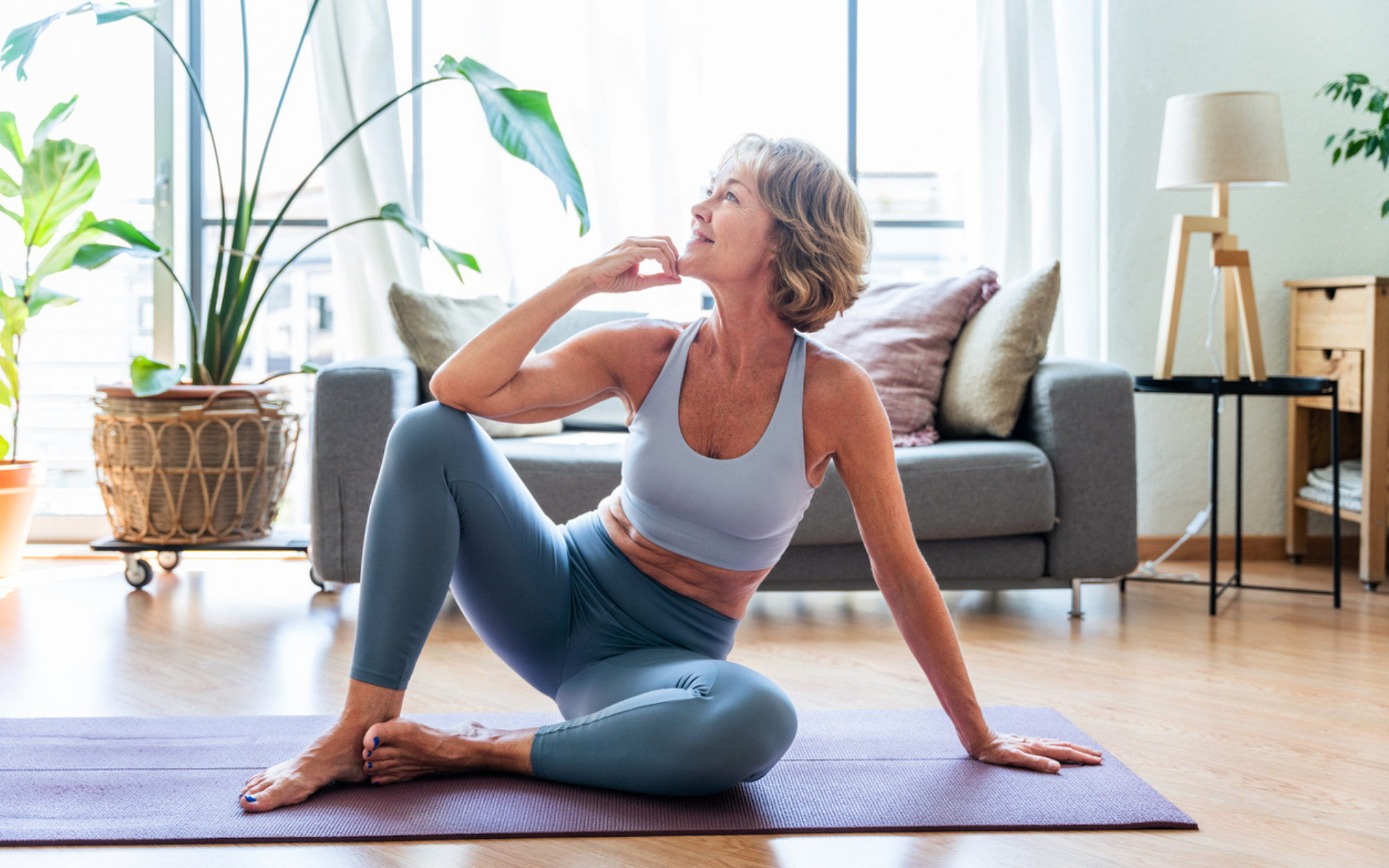Can You Treat Overactive Bladder Naturally?

Imagine feeling like you need to pee all the time. Or constantly waking up in the middle of the night to run to the toilet. For up to 33 million adults in the US alone, these overactive bladder (OAB) symptoms are a daily challenge.
OAB can impact not only your urinary health but also your quality of life. Symptoms often cause frustration, confusion, discomfort—not to mention other conditions like urinary tract infections (UTIs).
Luckily, there are several treatment options for overactive bladder. Let’s learn about the different types of OAB, how it’s caused, and how you can treat OAB naturally, so you can get back to a healthy bladder and a happy life.
What is OAB and what are the different types?
Overactive bladder is a combination of symptoms that impact how you pee, such as:
- Urinary frequency: Feeling like you need to pee often.
- Urgency: Uncontrollable urges to pee—also known as that “gotta go” feeling.
- Incontinence: When pee leaks from your bladder, beyond your control.
- Nocturia: Waking up at night to pee.
These symptoms can impact your life in countless ways, interrupting your work, sleep, social schedule, and sex life. You might feel nervous to go anywhere that isn’t close to a bathroom. On top of it all, many people with OAB feel too embarrassed to seek medical help or talk to someone they trust about their symptoms. This can feel lonely and isolating. But with the right education and treatment, it doesn’t have to.
What are the causes of OAB?
To understand how OAB happens, we first need to know how the bladder works. When your bladder is full, your brain signals for the bladder muscles—specifically your detrusor muscle—to squeeze. This pushes the urine out of the bladder, through the urethra, and out of your body.
Anything that affects the function of your detrusor muscle can cause OAB. Nerve damage, pregnancy and childbirth, alcohol or caffeine intake, infections, obesity, and hormonal changes post-menopause can all cause your bladder muscles to stop working the way they’re supposed to.
Who can get OAB?
OAB is most common in adults over the age of 65. But that’s not the full picture. Women often get OAB around the age of 45 and they’re about 10% more likely to develop it than men.
Ageing isn’t the only risk factor associated with OAB. Anything that impacts your brain or bladder function can make you more susceptible to symptoms. For example, if you have a spinal cord injury or Multiple Sclerosis, if you’re pregnant, or if you suffer from recurrent urinary tract infections.
What are first-line treatments for OAB?
Your doctor might suggest a handful of lifestyle changes before prescribing any medications. These are called first-line treatments—also known as behavioural therapy—and for many people, they can make a world of difference. Here are some of the most common first-line treatments for OAB:
Dietary changes. Try to limit food and drinks that irritate the bladder, like coffee, tea, alcohol, soda, tomato, citrus fruits, chocolate, and some spicy foods.
Keep a bladder diary. Write down when and how often you’re peeing, plus any triggers that seem to be making your symptoms worse. This can help you decipher what changes could help your symptoms.
Weight loss. Studies have shown that even 5 to 10% weight loss in overweight patients can help relieve symptoms of OAB.
Double voiding. After you pee, wait a few moments and then try peeing again. If you struggle to fully empty your bladder, this could help.
Delayed voiding. When you get the urge to pee, try waiting before you go. You might wait a few minutes or a few hours, but the practice can potentially help you resist the urgency long-term.
Make a pee schedule. Set times during the day to urinate, whether you have the urge to or not. This can help you regain control of your bladder.
Bladder muscle exercises. These could include kegals, where you strengthen your pelvic floor by tightening your pelvic muscles over and over. You can also do quick flicks—an exercise where you squeeze and release your pelvic muscles repeatedly when you feel the urge to pee. This can calm the urge and help you focus on staying in control of your bladder.
What are second-line treatments for OAB? What are the side effects?
If lifestyle changes aren’t doing the trick, your doctor might suggest prescription drugs to relax your bladder muscles and stop them from spasming. The most common drugs are anticholinergics or beta-3 adrenergics.
The only problem? These prescription medications often come with frustrating side effects, like dry mouth, constipation, and blurred vision. Always talk to your doctor about which medication is best for you and your unique condition.
What are third-line treatments for OAB? What are the side effects?
For more severe cases of OAB, your doctor might suggest procedural therapy. This can include:
Bladder Botox injections to stop the bladder muscles from contracting so much.
Nerve stimulation to wake up the signals between the brain and the bladder and help them work properly. The two main types of nerve stimulation are percutaneous tibial nerve stimulation (PTNS) and sacral nerve stimulation (SNS).
Bladder reconstruction surgery (among other medical procedures), only in very rare cases.
Like any medical procedure, there are risks you should be aware of. Third-line treatments could lead to infection, nervous system issues, and other complications. Be sure to discuss all risks and benefits with your doctor thoroughly before undergoing any of these treatments.
Can you treat OAB naturally?
Absolutely. Utiva Bladder Health is a natural solution for managing OAB and its many symptoms. This all-natural supplement contains a unique formula that has been approved by Health Canada for 13 separate improvement claims, including OAB symptoms.
What makes Utiva Bladder Health so effective? 500 mg of proprietary full-spectrum dried cranberry fruit (also known as Flowens®). This unique extract has a proven superpower: strengthening your urinary function. It is believed that through an indirect immune and anti-inflammatory response, Flowens® has the ability to improve the bladder microbiome and relieve your OAB symptoms.
These benefits are backed by science. A study of Utiva Bladder Health proves it reduces urgency by 57% and bladder feeling full by 40%—making it one of the most effective supplements for bladder health.
Talk to your doctor about trying Utiva Bladder Health with a 100% money-back guarantee.
Living with OAB—emphasis on living.
Overactive bladder can feel debilitating for so many people. But with the right treatments, natural or otherwise, you can start to feel in control of your bladder again.
As you continue your OAB management journey, tap into as much education and support as you can—like this blog, for example. Most importantly, be kind to yourself. OAB isn’t easy and even natural supplements can take some time to start working. But it is possible to relieve symptoms and improve your quality of life.
REFERENCES:
https://my.clevelandclinic.org/health/diseases/14248-overactive-bladder
https://www.urologyhealth.org/urology-a-z/o/overactive-bladder-(oab)
https://www.ncbi.nlm.nih.gov/pmc/articles/PMC8299659/
https://patient.info/womens-health/lower-urinary-tract-symptoms-in-women-luts/overactive-bladder-syndrome-oabKnowledge is power
Sign up to our newsletter to keep learning!

- Choosing a selection results in a full page refresh.
- Opens in a new window.



